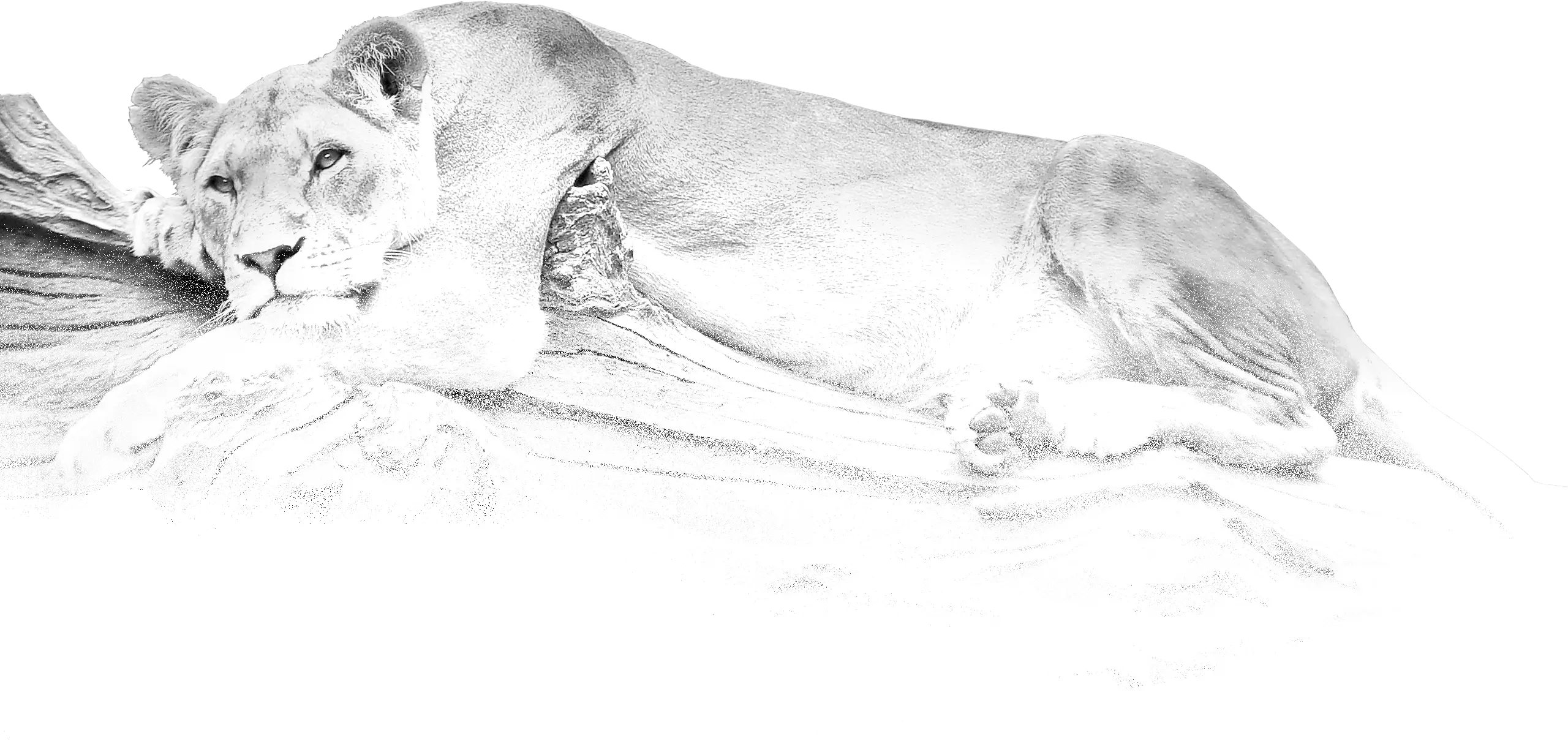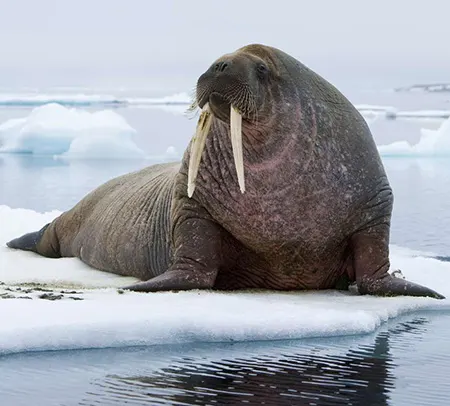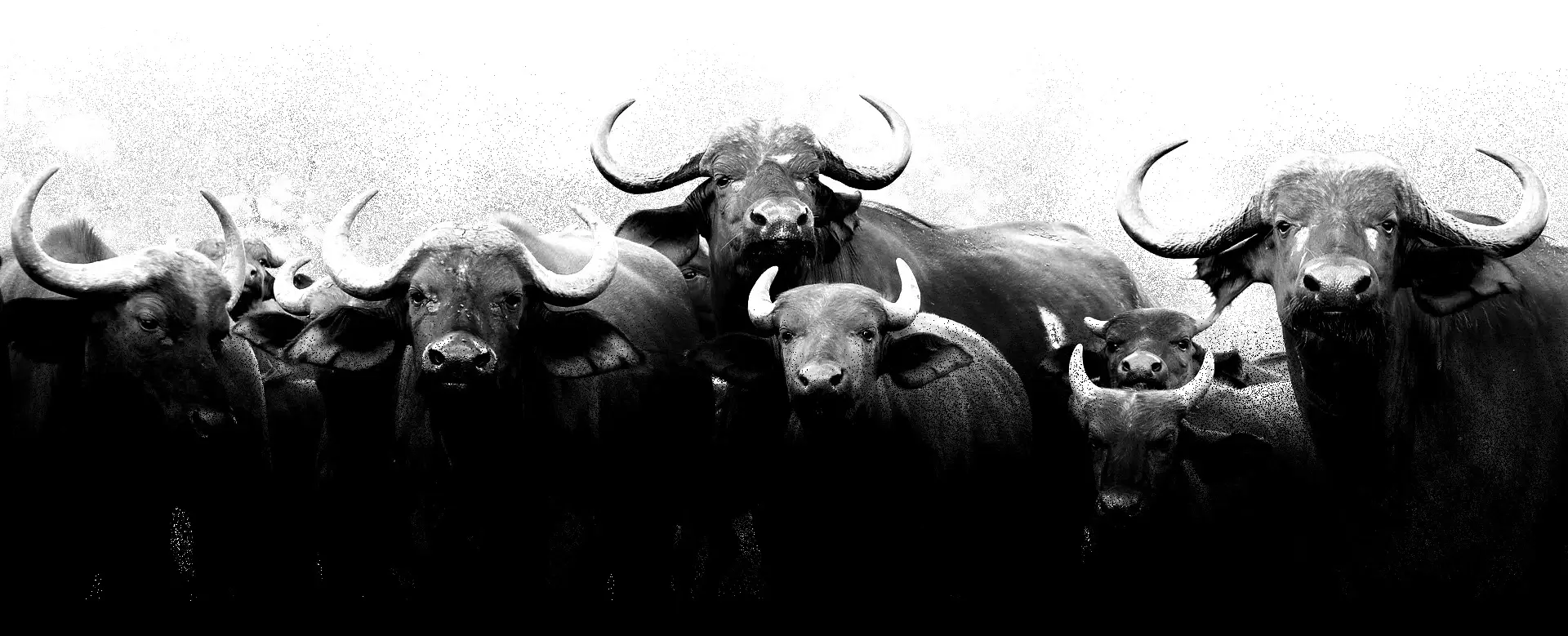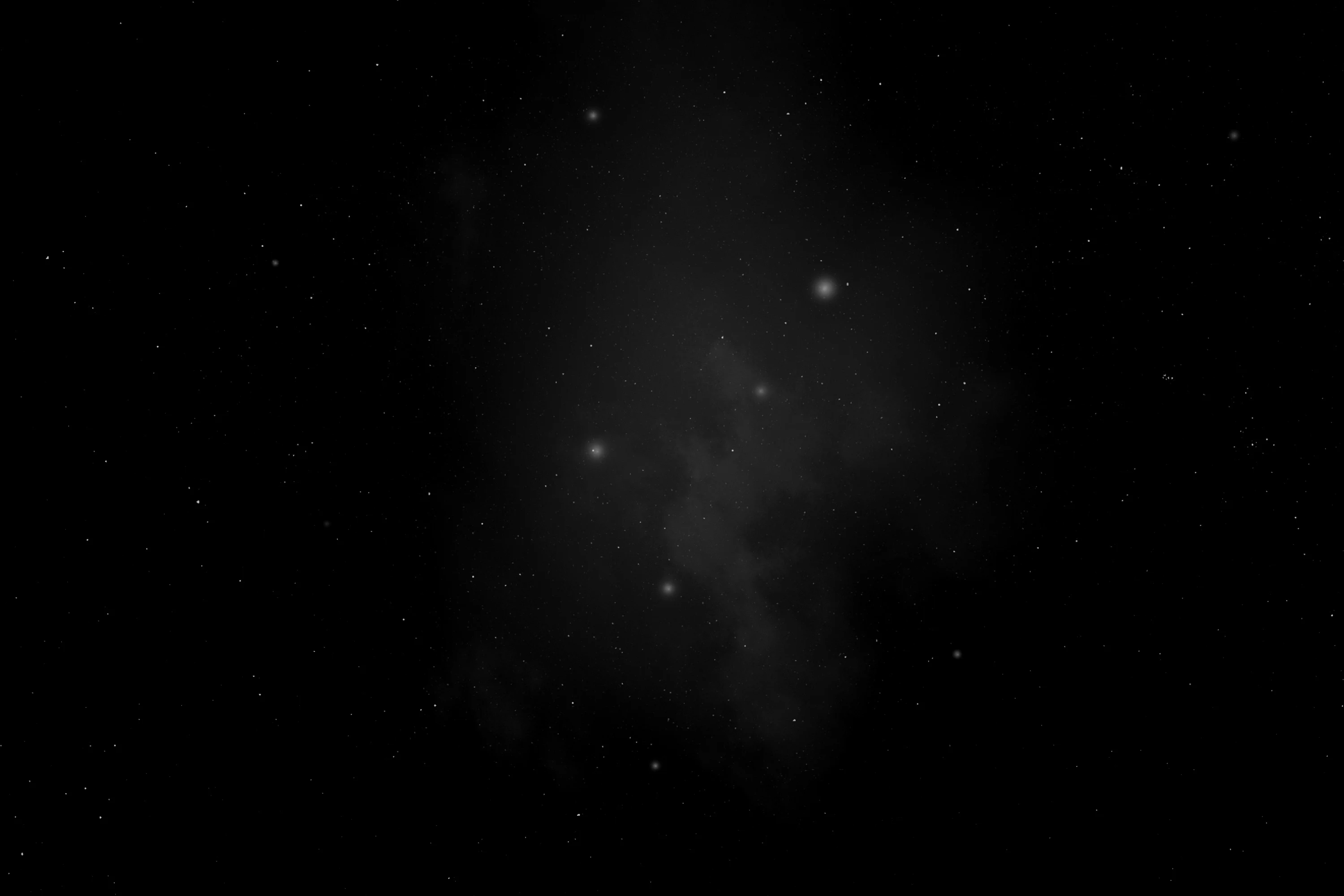
(Odobenidae)
Walruses
Моржеві
(Odobenus rosmarus)
Walrus
Морж
The majority of the population of the Pacific walrus spends its summers north of the Bering Strait in the Chukchi Sea of the Arctic Ocean along the northern coast of eastern Siberia, around Wrangel Island, in the Beaufort Sea along the northern shore of Alaska south to Unimak Island, and in the waters between those locations. Smaller numbers of males summer in the Gulf of Anadyr on the southern coast of the Siberian Chukchi Peninsula, and in Bristol Bay off the southern coast of Alaska, west of the Alaska Peninsula. In the spring and fall, walruses congregate throughout the Bering Strait, reaching from the western coast of Alaska to the Gulf of Anadyr. They winter over in the Bering Sea along the eastern coast of Siberia south to the northern part of the Kamchatka Peninsula, and along the southern coast of Alaska.
The much smaller population of Atlantic walruses ranges from the Canadian Arctic, across Greenland, Svalbard, and the western part of Arctic Russia.
Migration
The rest of the year (late summer and fall), walruses tend to form massive aggregations of tens of thousands of individuals on rocky beaches or outcrops. The migration between the ice and the beach can be long-distance and dramatic. In late spring and summer, for example, several hundred thousand Pacific walruses migrate from the Bering Sea into the Chukchi Sea through the relatively narrow Bering Strait.
Reproduction
Walruses live to about 20–30 years old in the wild. The males reach sexual maturity as early as seven years, but do not typically mate until fully developed at around 15 years of age. They rut from January through April, decreasing their food intake dramatically. The females begin ovulating as soon as four to six years old. The females are diestrous, coming into heat in late summer and around February, yet the males are fertile only around February; the potential fertility of this second period is unknown. Breeding occurs from January to March, peaking in February. Males aggregate in the water around ice-bound groups of estrous females and engage in competitive vocal displays. The females join them and copulate in the water.
Gestation lasts 15 to 16 months. The first three to four months are spent with the blastula in suspended development before it implants itself in the uterus. This strategy of delayed implantation, common among pinnipeds, presumably evolved to optimize both the mating season and the birthing season, determined by ecological conditions that promote newborn survival. Calves are born during the spring migration, from April to June. They weigh 45 to 75 kg at birth and are able to swim. The mothers nurse for over a year before weaning, but the young can spend up to five years with the mothers. Walrus milk contains higher amounts of fats and protein compared to land animals but lower compared to phocid seals. This lower fat content in turn causes a slower growth rate among calves and a longer nursing investment for their mothers. Young may be suckled at sea as well as during long haul-outs, making walrus the only pinnipeds that exhibit aquatic suckling. Because ovulation is suppressed until the calf is weaned, females give birth at most every two years, leaving the walrus with the lowest reproductive rate of any pinniped.
Diet
Walruses prefer shallow shelf regions and forage primarily on the sea floor, often from sea ice platforms. They are not particularly deep divers compared to other pinnipeds; the deepest dives in a study of Atlantic walrus near Svalbard were only 31 ± 17 m. However, a more recent study recorded dives exceeding 500 m in Smith Sound, between NW Greenland and Arctic Canada – in general, peak dive depth can be expected to depend on prey distribution and seabed depth.
The walrus has a diverse and opportunistic diet, feeding on more than 60 genera of marine organisms, including shrimp, crabs, priapulids, spoon worms, tube worms, soft corals, tunicates, sea cucumbers, various mollusks (such as snails, octopuses, and squid), some types of slow-moving fish, and even parts of other pinnipeds. However, it prefers benthic bivalve mollusks, especially clams, for which it forages by grazing along the sea bottom, searching and identifying prey with its sensitive vibrissae and clearing the murky bottoms with jets of water and active flipper movements. The walrus sucks the meat out by sealing its powerful lips to the organism and withdrawing its piston-like tongue rapidly into its mouth, creating a vacuum. The walrus palate is uniquely vaulted, enabling effective suction; researchers measured pressures in the oral cavity as low as -87.9 kPa in air, and -118.8 kPa underwater. The diet of the Pacific walrus consist almost exclusively of benthic invertebrates (97%).
Aside from the large numbers of organisms actually consumed by the walrus, its foraging has a large peripheral impact on benthic communities. It disturbs (bioturbates) the sea floor, releasing nutrients into the water column, encouraging mixing and movement of many organisms and increasing the patchiness of the benthos.
Seal tissue has been observed in a fairly significant proportion of walrus stomachs in the Pacific, but the importance of seals in the walrus diet is under debate. There have been isolated observations of walruses preying on seals up to the size of a 200 kg bearded seal. Rarely, incidents of walruses preying on seabirds, particularly the Brünnich’s guillemot (Uria lomvia), have been documented. Walruses may occasionally prey on ice-entrapped narwhals and scavenge on whale carcasses but there is little evidence to prove this.
Predators
Due to its great size and tusks, the walrus has only two natural predators: the orca and the polar bear. The walrus does not, however, comprise a significant component of either of these predators’ diets. Both the orca and the polar bear are also most likely to prey on walrus calves. The polar bear often hunts the walrus by rushing at beached aggregations and consuming the individuals crushed or wounded in the sudden exodus, typically younger or infirm animals. The bears also isolate walruses when they overwinter and are unable to escape a charging bear due to inaccessible diving holes in the ice. However, even an injured walrus is a formidable opponent for a polar bear, and direct attacks are rare. Armed with its ivory tusks, walruses have been known to fatally injure polar bears in battles if the latter follows the other into the water, where the bear is at a disadvantage. Polar bear–walrus battles are often extremely protracted and exhausting, and bears have been known to break away from the attack after injuring a walrus. Orcas regularly attack walruses, although walruses are believed to have successfully defended themselves via counterattack against the larger cetacean. However, orcas have been observed successfully attacking walruses with few or no injuries.


